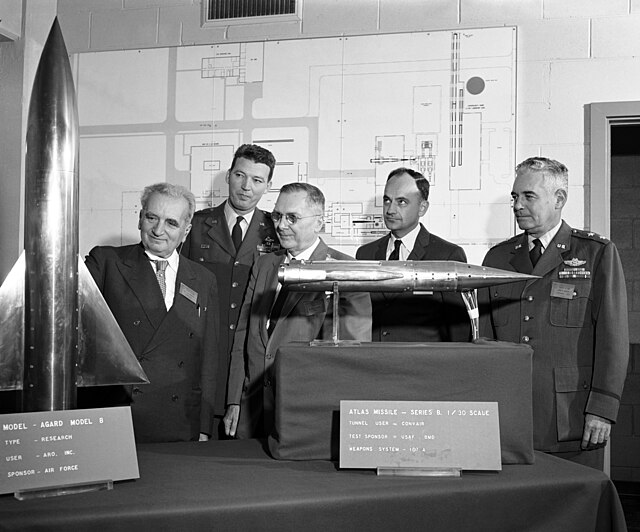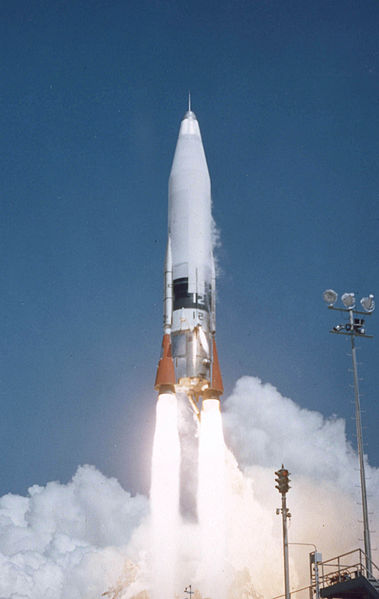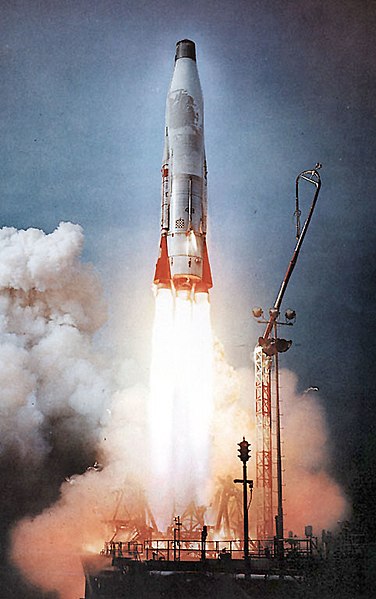The Atlas-Agena was an American expendable launch system derived from the SM-65 Atlas missile. It was a member of the Atlas family of rockets, and was launched 109 times between 1960 and 1978. It was used to launch the first five Mariner uncrewed probes to the planets Venus and Mars, and the Ranger and Lunar Orbiter uncrewed probes to the Moon. The upper stage was also used as an uncrewed orbital target vehicle for the Gemini crewed spacecraft to practice rendezvous and docking. However, the launch vehicle family was originally developed for the Air Force and most of its launches were classified DoD payloads.
An Atlas-Agena launching Lunar Orbiter 4
Ranger block I spacecraft bus was used for the first two Rangers, and also for the first two Mariner interplanetary probes
Mariner 3, 4, and 5 spacecraft bus
The Agena Target Vehicle as seen from Gemini 8 during rendezvous, March 16, 1966
The SM-65 Atlas was the first operational intercontinental ballistic missile (ICBM) developed by the United States and the first member of the Atlas rocket family. It was built for the U.S. Air Force by the Convair Division of General Dynamics at an assembly plant located in Kearny Mesa, San Diego.
Atlas 2E missile, San Diego Aerospace Museum
Theodore von Kármán, left, is joined by Air Force and NASA officials while inspecting two of the models used in the high velocity, high altitude wind tunnels at Arnold Air Force Base. The missiles are AGARD-B and Atlas Series-B. (1959)
Atlas, test number 449, Air Force Missile Test Center.
Launch of an Atlas B ICBM.








